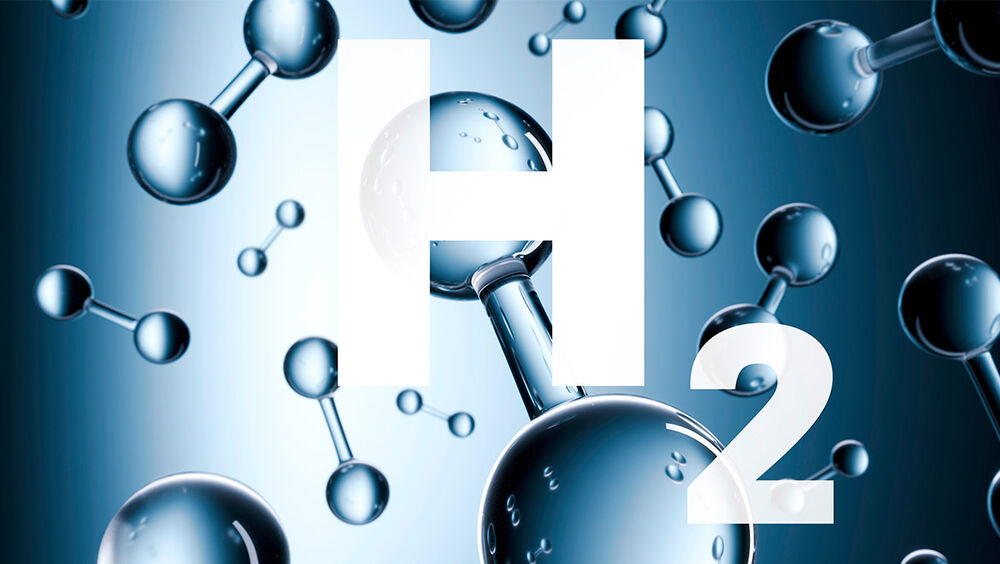With Hydrogen Into The Future

Hydrogen has the potential to enable completely emissions-free flight for most aircraft in the future. MTU Aero Engines has high hopes for it. “Hydrogen is a highly attractive future option for us as an aero engine producer,” says MTU Chief Operating Officer Lars Wagner. “It should be used as a fuel right away,” he adds.
Germany’s leading engine manufacturer sees three possible uses for hydrogen: Converted to sustainable aviation fuels (SAFs), hydrogen could be dropped into existing aircraft and engines right away. “Direct combustion of liquid hydrogen in gas turbines is possible in technical terms, too,” says Dr Stefan Weber, Senior Vice President Engineering and Technology at MTU in Munich, highlighting the second possible use. That would require some adjustments in the engine, especially the combustion chamber, which Weber thinks could be done in just a few years. By contrast, much larger challenges await for infrastructure and aircraft manufacturers, since they will have to find ways to provide and transport the liquid hydrogen and then carry it along inside appropriate tanks inside the aircraft.
In the long term, MTU is relying on a third option for using hydrogen: converting it into electricity by means of a fuel cell. This application is also described by the MTU experts in their Technology Roadmap for achieving emissions-free flight. This technology promises almost zero emissions, but it is still in the early stages of development in aircraft propulsion applications. “We call our fuel cell concept the flying fuel cell. We have an established team of experts working on it in Munich,” Weber explains. In August 2020, MTU teamed up with the German Aerospace Center (DLR) to launch a cooperative project with the aim of demonstrating the new technology in a Do228.
Designed back in the 1980s and sporting an elongated nose and two propeller-driven turboprop engines, the Dornier 228 certainly does not look like the future of aviation. However, if everything goes to plan and the aircraft takes off from the DLR German Aerospace Center’s Oberpfaffenhofen research airport in about six years’ time, it will have a technical revolution on its wing: a fuel-cell powertrain specially developed for aviation applications. “As things stand today, the fuel cell in conjunction with sustainably produced hydrogen offers the greatest long-term potential for realizing emissions-free aviation. That’s our vision for the future,” says Lars Wagner. “We believe that a fuel-cell system of this kind could in future provide sufficient power and range to be used as the primary propulsion system for regional, short- and medium-haul aircraft.”
Barnaby Law, Chief Engineer Flying Fuel Cell at MTU, is confident that it’s possible to keep the highly ambitious development schedule on track. As fuel-cell technology has matured, driven primarily by the automotive industry, the power-to-weight ratio has improved steadily over the past ten years; at the same time, wider supplier chains have been established. “Overall, that’s a great basis to start further developing the technology for aerospace applications,” he says. Because fuel cells need to be made even more powerful if they are to become the primary propulsion system for aircraft carrying a larger number of passengers and flying over a certain range. Law believes there is no need to fear insurmountable obstacles: “Given that weight reduction is inherently more important in aviation than in the automotive industry, we already know some viable approaches to start optimizing fuel cells,” the fuel-cell specialist says.
In a study published in June last year, Clean Sky, the largest European research program, estimates that direct-burn hydrogen systems can reduce the global warming effect of flying by between 50 and 75 percent, and SAFs can reduce it by between 30 and 60 percent. The study’s authors believe that the fuel cell has the potential to reduce climate impact by 75 to 90 percent. “Essentially, we need all three technologies,” Weber says. While SAFs are the only option for operating the existing aircraft fleet in a more climate-friendly way, he explains, it is illogical to simply rely on a single solution if even better technologies are available in the long term.
Besides hydrogen, MTU’s development work is also focusing on the further development of the gas turbine to leverage the full amount of potential available. Further optimized and combined with revolutionary drive concepts that significantly improve the cycle, considerable reductions in all emissions can be achieved. MTU is currently focusing on what is known as a WET engine (Water-Enhanced Turbofan). This concept reduces fuel consumption by more than 15 percent regardless of fuel type, considerably lowers all emissions – especially NOx levels – and, according to initial estimates, also reduces formation of contrails.
Lars Wagner explains: “We need both propulsion concepts – an optimized gas turbine combined with WET technology and fuel cells – because they have different areas of application.” The hydrogen-powered fuel cell is especially suitable for short- to medium-haul aircraft, as it requires less tank volume than in the case of long-haul aircraft. For these types of planes, gas turbines will continue to make sense for the foreseeable future. “But in that case, using SAFs,” Dr Stefan Weber sums up, adding, “Realizing the new technologies, and reaching our climate targets, will depend to a crucial degree on receiving appropriate funding, both nationally and at the European level.”





Comments